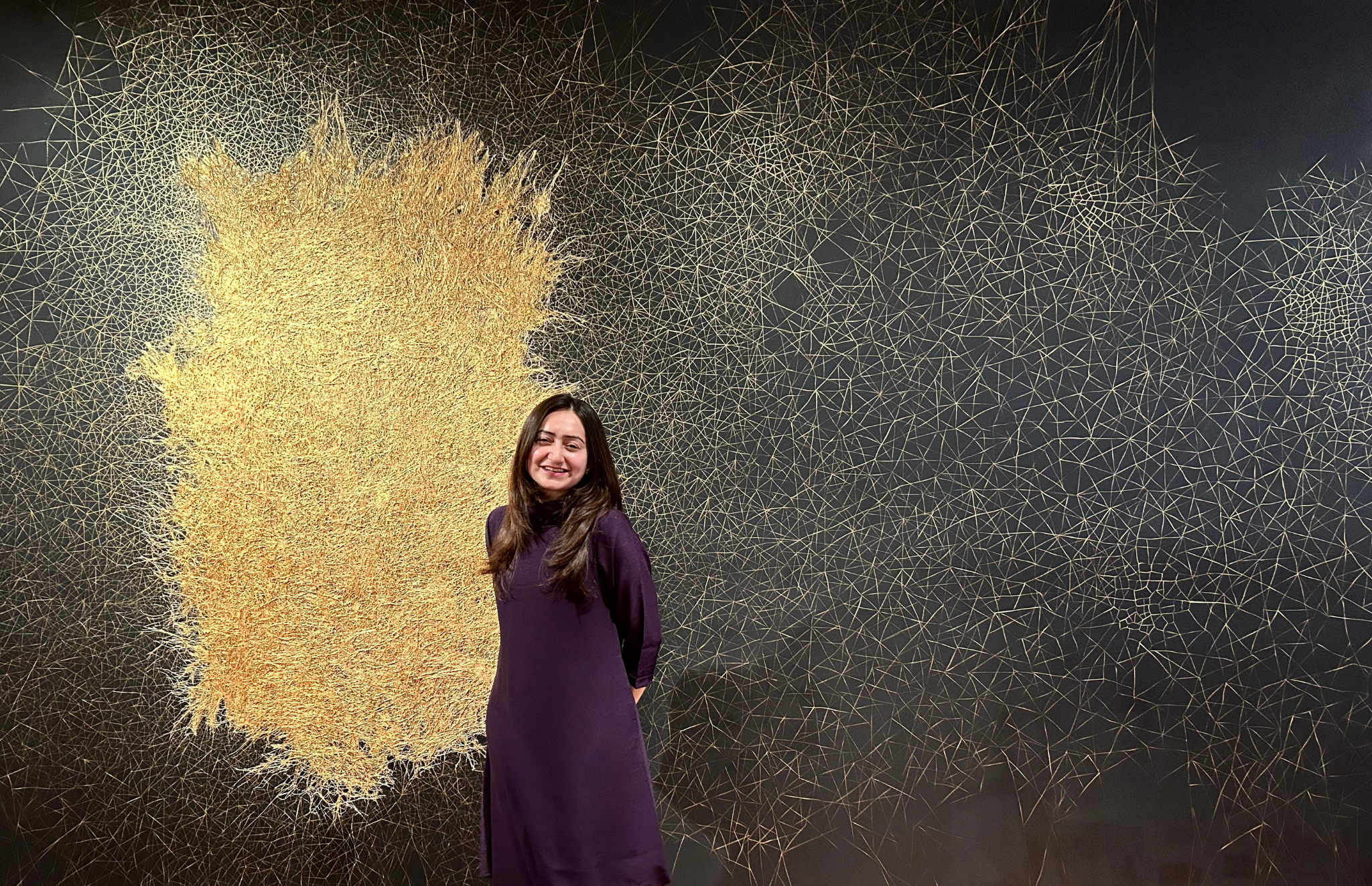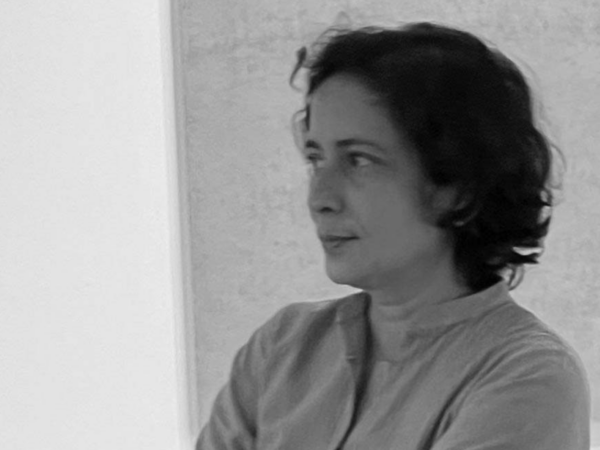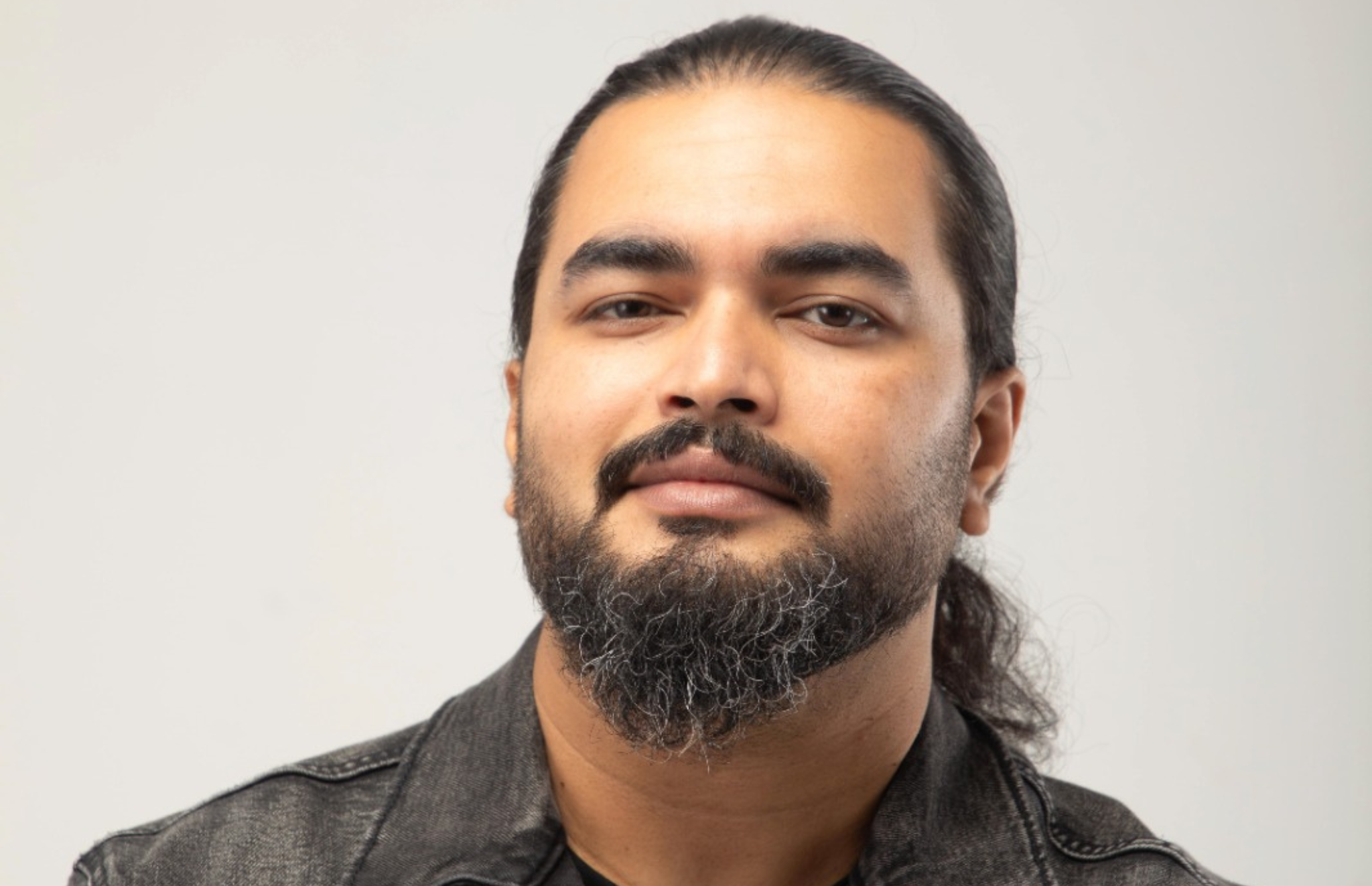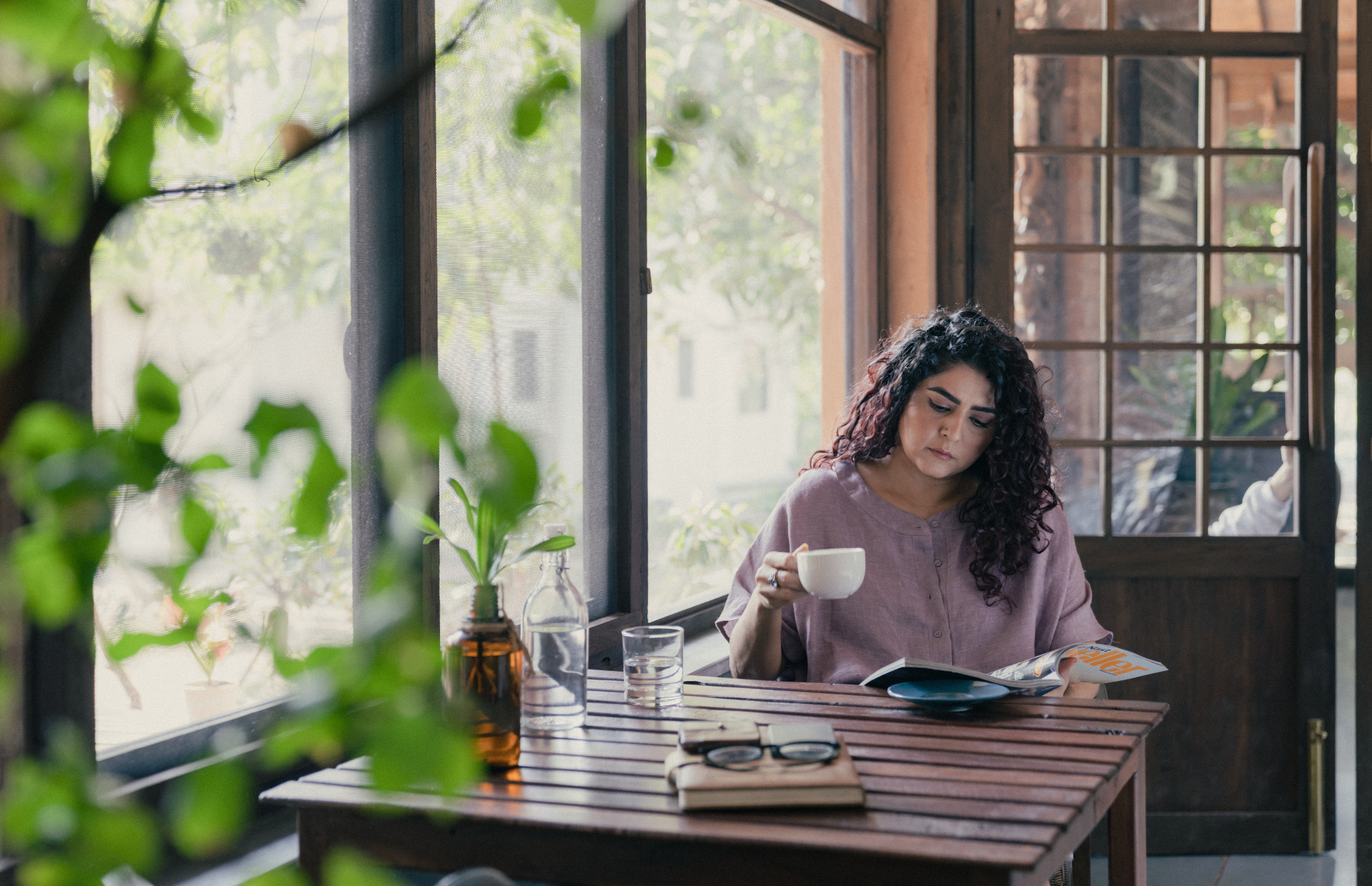Debashish Paul is a multidisciplinary artist born in 1994 in the Nadia district of West Bengal. He explores the problems of queer identity in a society dominated by heterosexual norms through his work. He graduated with a B.F.A. in Sculpture from The Indian college of Art and Draftsmanship Kolkata, and an M.F.A. in Sculpture from Banaras Hindu University, Varanasi in 2019 and 2021 respectively. Paul’s work has been exhibited at many national and international shows and performance spaces, including Bowes Museum, UK, Prince Claus Fund Biennial Symposium in Sri Lanka, Kochi-Muziris Biennale Performance Residency and Emami Art, Kolkata, among others. Debashish lives and works between Varanasi and Nadia district in West Bengal.
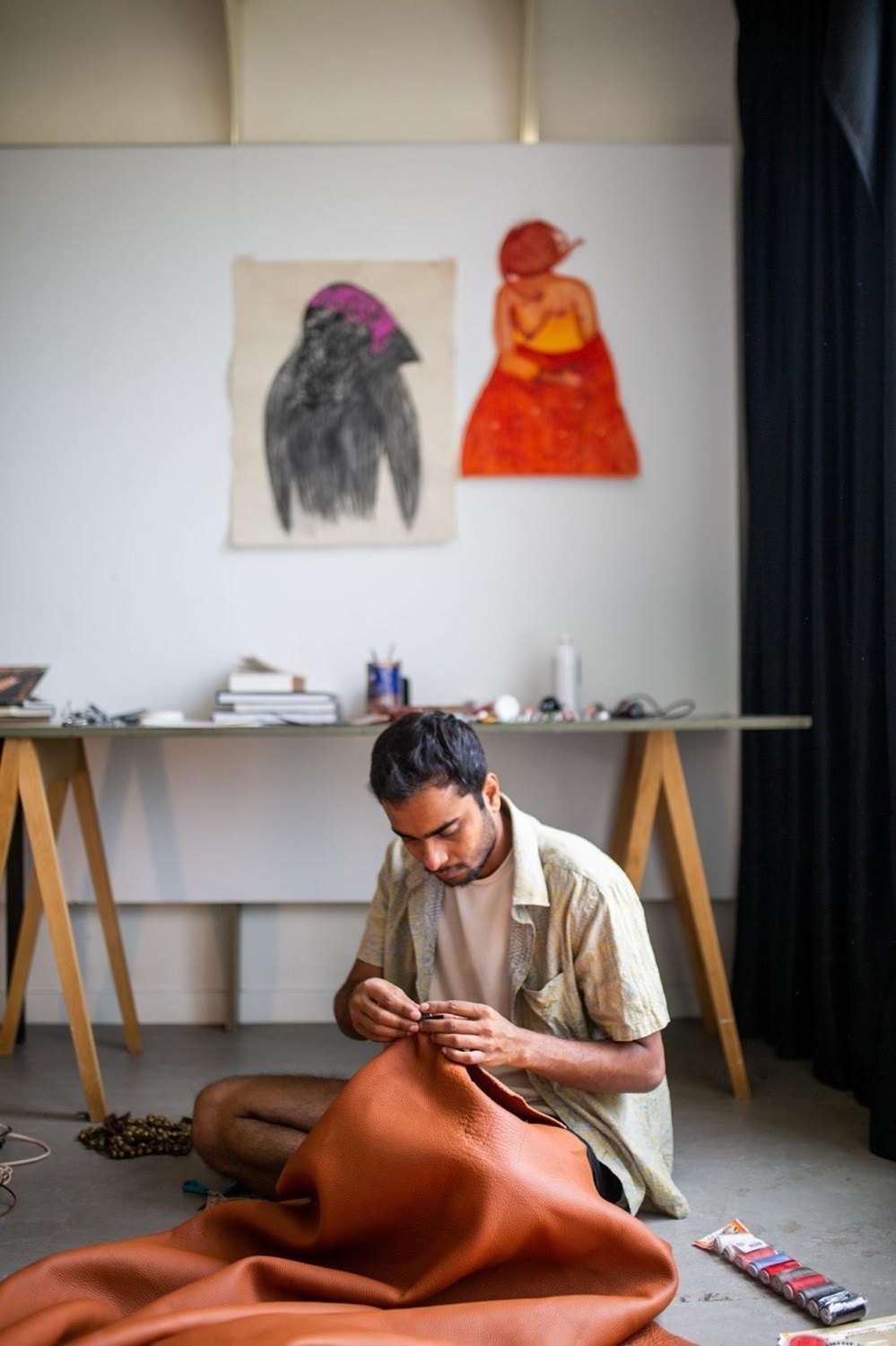
Photo Courtesy: Ali Zaray
SP: Could you give insights into your artistic process during the durational performances?
DP: Developing a performance is a meticulous process that typically takes 2 to 4 months. It involves developing the thought, costume design, sound, and performance.
Most of my performances are site-specific. Before initiating the creative process, I deeply study the chosen space. Every day, I walk through the site, exploring the city, water bodies, and landscapes. This immersive engagement aids in conceptualizing the performance. Throughout the development phase, I continue these daily walks, drawing inspiration from the visuals and experiences they offer. These observations guide the development of costume, movement, and sound.
The process of developing a performance involves transforming myself to resonate with the chosen space. During this period, both consciously and subconsciously, I adapt my internal movements to align with this new embodiment. My daily activities reflect this new attire, leading to improvised movements. Furthermore, my travels and walks serve to extend my perception of self, blurring the boundaries between my body and the nature.
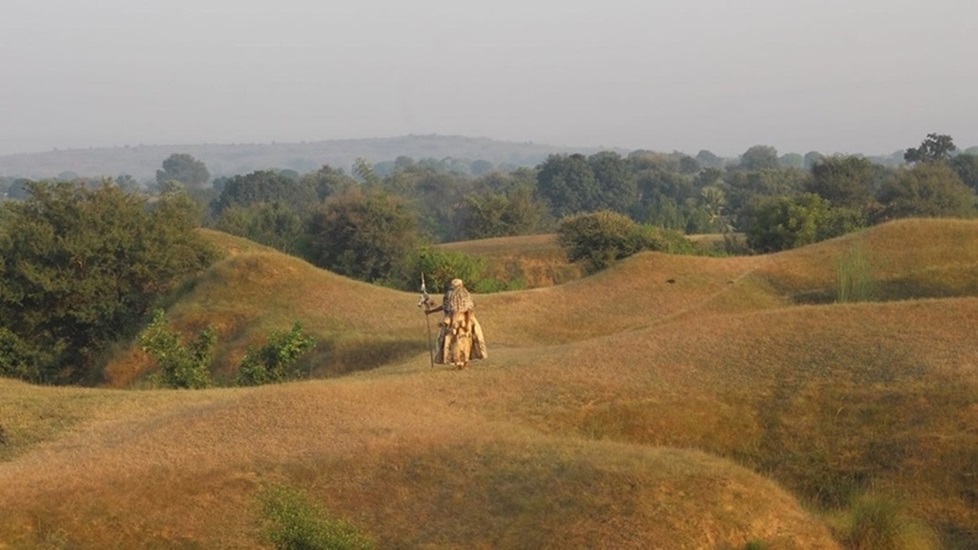
Video and photo courtesy: Saurabh Singh Photo Credit: Saurabh Singh, Sayanth RS and Emami Art
My work can be categorized into two distinct types: video performances and live performances. Each type offers a unique experience with its own set of characteristics and nuances.
In my video performances, I respond to the environment and its elements. I see my performances as spiritual, deeply connected with nature, the earth and the universe. These performances primarily take place in natural settings, where my body interacts harmoniously with nature. Through these performances, I seek to understand and create rituals that resonate with the essence of nature and the space.
Conversely, live performances offer a different dynamic. Here, I aim to create a diverse emotional landscape that bridges the gap between the audience and the performer. Throughout a live performance, I remain acutely aware of how I can connect with the audience, the space, and myself. This continuous transformation and focus help me create a powerful presence that invites the audience into my emotional and personal space.
Despite being naturally reserved, I undergo a profound transformation during my performances. My sculptural costume aids in this continuous metamorphosis, making me more fluid and adaptable. The entire duration of a performance serves as a deep meditative process. I remain intensely focused on my body, the space, and the audience. This concentrated attention fosters an emotional and spiritual connection, unifying the audience and myself into one cohesive entity.
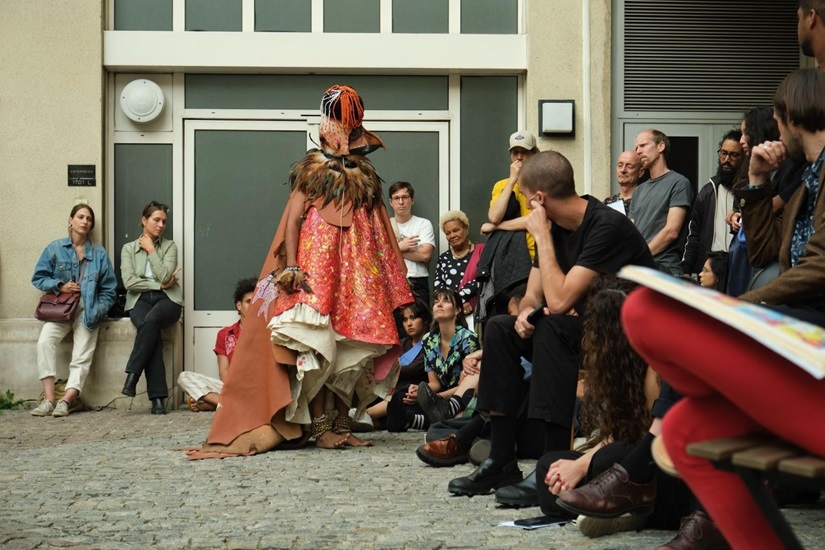
Photo Courtesy Aniruddha Biswas
SP: How do you perceive the body in terms of gender fluidity, and why is it important for you to depict it as a genderless entity in your performances?
DP: I often talk about my internal body, and how the physical body is a reflection of the internal body. I imagine my body as an endless poem; whatever I see or feel, I can transform into it. I can transform into a river, a flower, the sky, a cloud, a bird, and even the universe itself. I feel that the body has no limitations; it is an endless universe. It changes colors like a butterfly, and my fluid body can fly to the past, the future, and anywhere I can imagine. I enjoy my fluid body; I can transform into my mother’s body to feel her pain, or into a child to experience their pure heart and ego-less smile.
Gender is a social boundary; it’s a cell for the soul. A genderless entity extends my body to infinity. Being genderless allows me to transform into anything. My nature gravitates towards the earth, and the earth, in turn, helps me find my own gender. During my performances, I aim to depict a new world where no gender boundaries exist—only love and empathy prevail, and where nature and human beings can coexist harmoniously.
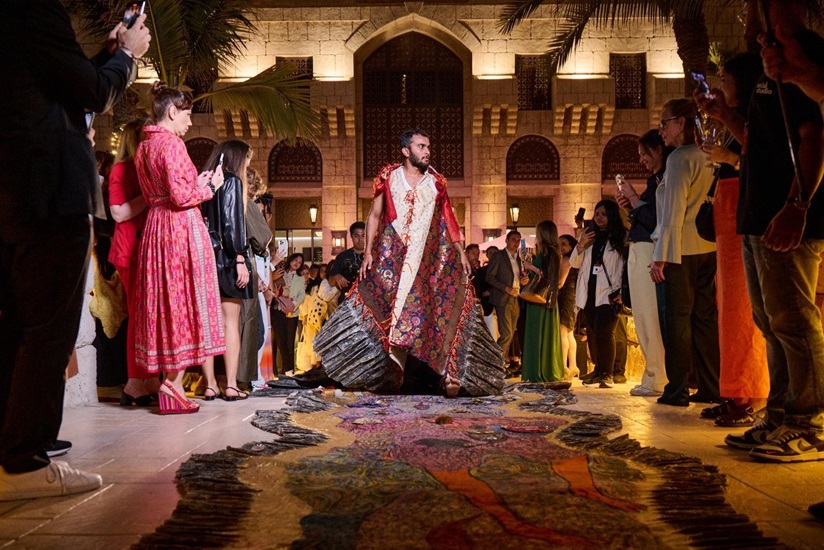
Photo Courtesy: Art Dubai 2024
SP: How do you choose your mediums and techniques for each project? Particularly, how do you incorporate natural elements in your materials?
DP: Choosing mediums and techniques for each project is a dynamic and evolving process for me, deeply rooted in the specificities of the site and the conceptual underpinnings of the work. As I mentioned earlier, most of my projects are site-specific, which drives me to seek out and collect local materials, folk materials, and ritualistic elements that resonate with the chosen environment.
I am particularly drawn to local crafts and ready-made local artifacts, as they offer insights into the primitive existence of identity. Incorporating these materials not only enriches the texture and narrative of my work but also fosters a deeper connection to the cultural and historical fabric of the place.
Furthermore, I prioritize the use of natural mediums and elements in my work to forge a tangible link with the earth and nature. Walking through mountain landscapes and riversides to source materials is akin to retracing fragments of my prehistoric body, reconnecting with ancestral memories and primordial energies.
In essence, I treat my body as a landscape, and it becomes imperative for me to integrate natural materials directly into my artistic practice. This symbiotic relationship between my body and the natural world informs my choice of mediums and techniques, guiding me towards a more holistic and embodied expression of identity and interconnectedness.
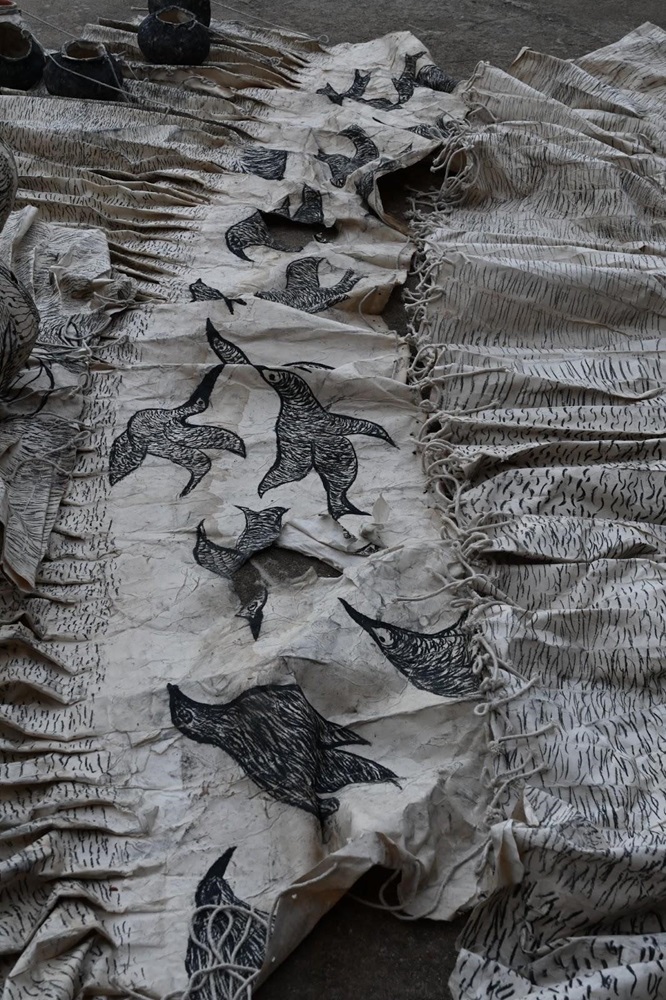
Photo Courtesy: Saurabh Singh, Sayanth RS and Emami Art
SP: In your work, you mention the process of automatism. Could you elaborate on how that impacts your creative method and sensibilities? Do you feel vulnerable, expressing yourself spontaneously?
DP: Incorporating automatism into my creative process is a transformative aspect of my artistic methodology, profoundly influencing both my creative method and sensibilities. Automatism, for me, signifies a spontaneous and unfiltered flow of ideas, emotions, and movements, devoid of conscious interference or premeditation.
This approach allows me to transcend conventional thought patterns and societal norms, accessing a deeper, more intuitive realm of expression. It enables me to channel the raw energy and essence of the spaces, environments, and natural elements I engage with in my performances, fostering a more authentic and uninhibited form of self-expression.
Embracing automatism often evokes a heightened sense of vulnerability within me, as I relinquish control and allow my subconscious to guide the creative journey. However, this vulnerability is integral to the transformative power of my performances. It serves as a catalyst for genuine human connection, inviting the audience to engage with my work on a deeper emotional and spiritual level.
In the spontaneity and vulnerability of the moment, I find a profound sense of liberation and connection, transcending barriers and fostering empathy and understanding. It is through this unguarded expression that I feel most connected to the essence of my art and the universal truths it seeks to explore and communicate.
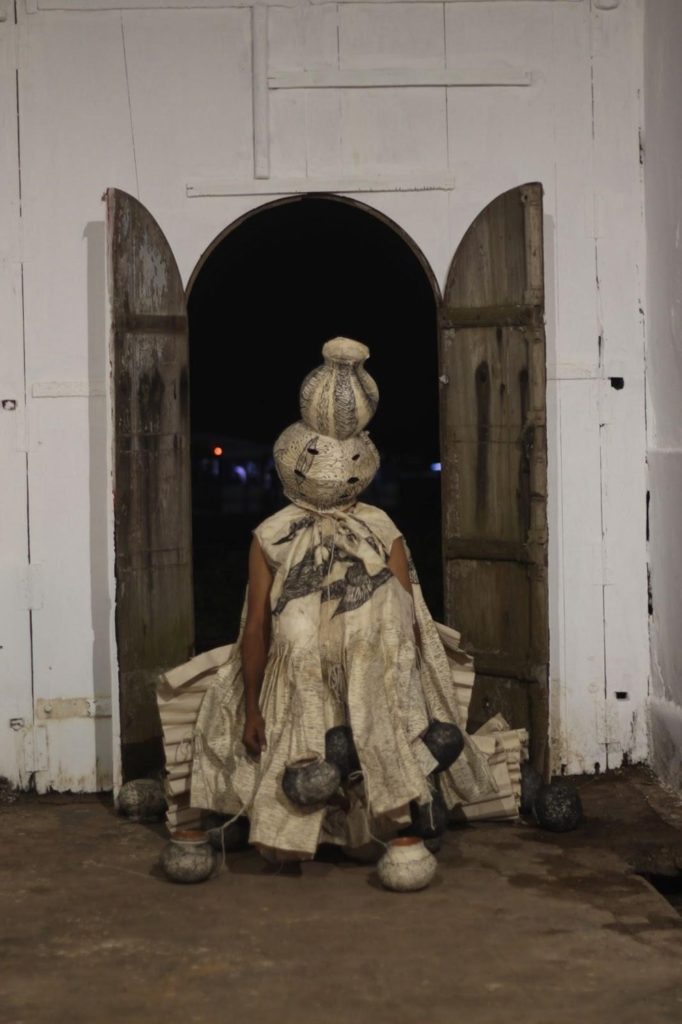
Photo Courtesy: Saurabh Singh, Sayanth RS and Emami Art
SP: You have mentioned how the landscape came to be a part of you during your performance, “Body as a Landscape; Body in a Landscape”. Could you elaborate on how you emulated the essence of landscape through your performance?
DP: In my 45-day durational performance titled “Body as a Landscape; Body in a Landscape,” conducted in the remote hilly region of Jārgo near Banaras, I immersed myself deeply within the natural environment, allowing it to profoundly influence and shape my artistic expression.
To emulate the essence of the landscape through my performance, I adopted a multifaceted approach. Initially, I documented the landscape meticulously through various mediums such as photos, videos, and drawings. This daily engagement with the environment served as a foundation for my creative process, enabling me to establish a deep and intimate connection with the surrounding nature.
Living alone in this isolated environment, with nature as my sole companion, I experienced a transformative integration of the landscape into my body and psyche. I practiced performing in harmony with the sounds and rhythms of nature, allowing my body to reflect and respond spontaneously to its surroundings. This fluid and responsive interaction with the environment became a central element of my performance, blurring the boundaries between my body and the landscape.
The creation of the sculptural dress over 40 days was a pivotal aspect of the project. Rather than adhering to fixed ideas or patterns, I approached the making of the dress as a spontaneous dialogue with the lived present, incorporating elements from the landscape and my personal stories. Natural materials such as flowers, roots, dry grass, and leaves were integrated into the dress, further accentuating its connection to the surrounding environment.
During the performance, as I wore the dress and moved through the hilly landscape of Jārgo, I felt a profound sense of unity with the land. The dress, functioning as a second skin, facilitated my integration into the landscape, encapsulating the essence of the environment within me.
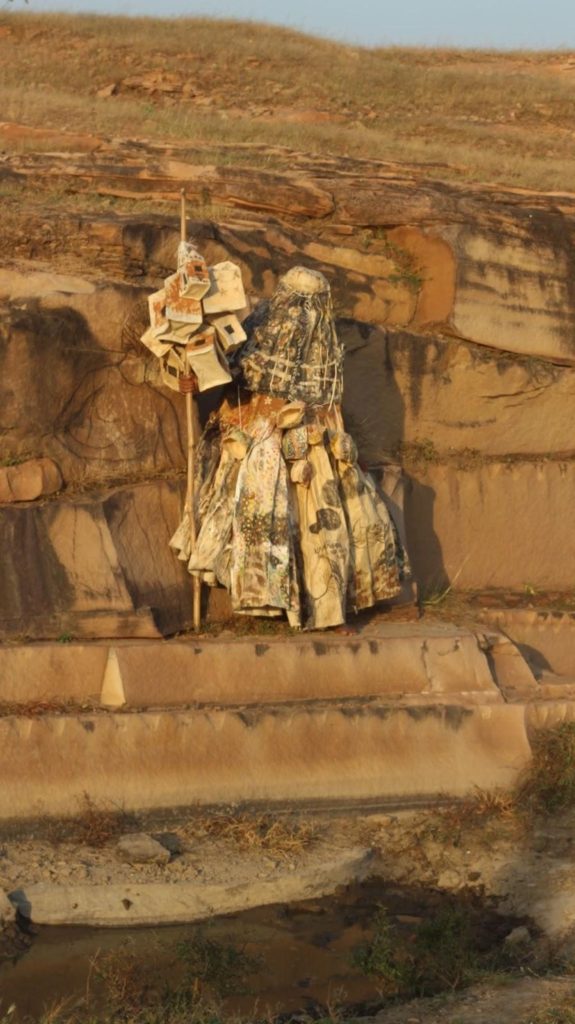
Video and photo courtesy: Saurabh Singh Photo Credit: Saurabh Singh, Sayanth RS and Emami Art
The house-like forms made from Nepali handmade paper symbolize the human quest for a sense of belonging and security. Carrying these forms as an itinerant mendicant throughout the performance, some of which eventually fell and were left behind, I conveyed the fragile and transient nature of human relationships, dreams, and the perpetual search for a home.
In conclusion, my performance in Jārgo was a deeply personal and introspective exploration of the symbiotic relationship between the human body and the natural landscape. Through my engagement with the environment, the sculptural dress, and the symbolic house-like forms, I sought to evoke a profound sense of interconnectedness, transformation, and the perpetual quest for identity and belonging within the ever-changing landscape of emotions and experiences.
Image Courtesy: Ali Zaray, Saurabh Singh, Sayanth RS, Emami Art, Aniruddha Biswas, Art Dubai 2024
Find out more about the Artist and his artworks:
https://www.emamiart.com/artists/41-debashish-paul/overview/


